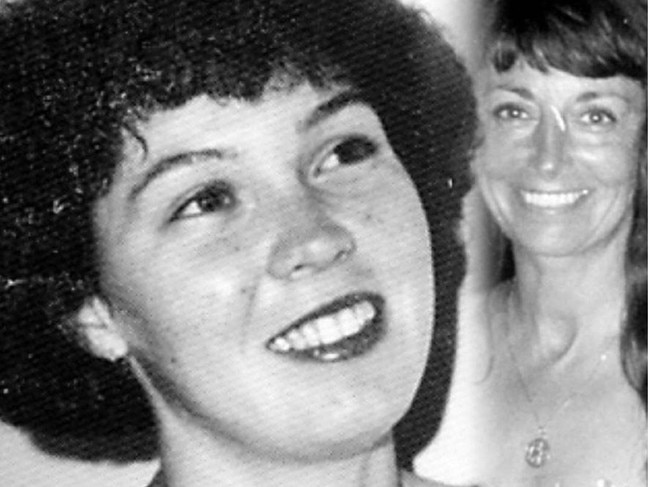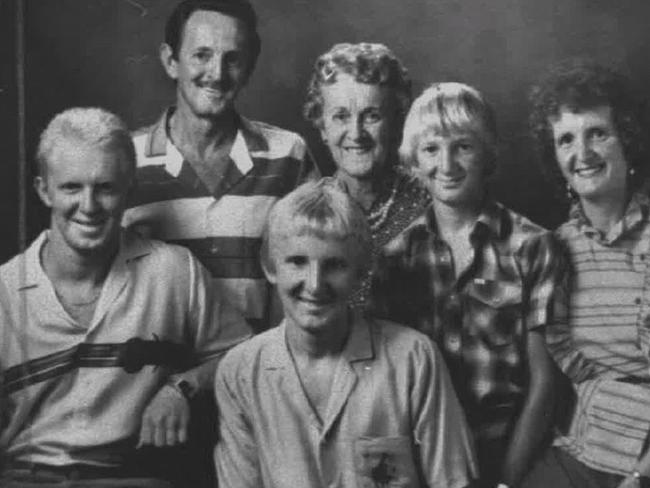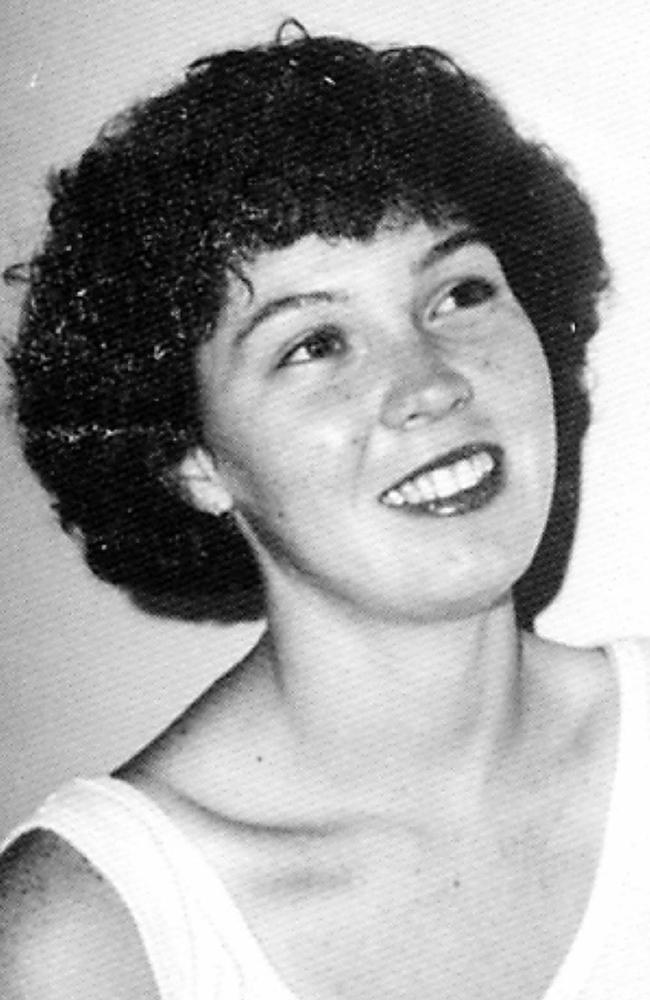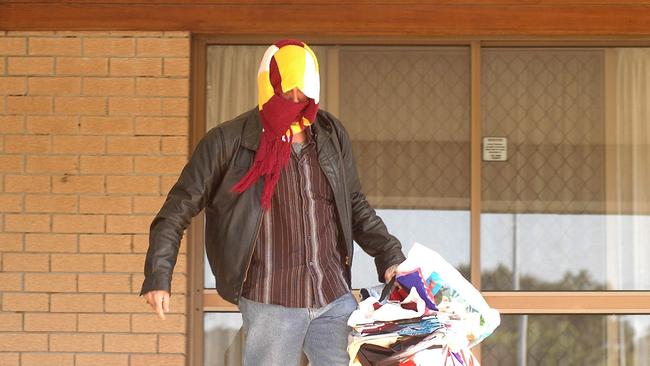True Crime: Queensland town paralysed after three murders
A TAXI driver who’d had his throat cut; a mum-of-three whose body was burned beyond recognition; and a church-going preschool teacher who’d been viciously killed in her own home. What was the link between these three horrific murders?

Crime in Focus
Don't miss out on the headlines from Crime in Focus. Followed categories will be added to My News.
TERESA Smith was a sensible young woman.
She had changed the locks in her Bundaberg unit the day after she moved in and chose her friends with care.
Police said it was her impeccable background that made her murder especially brutal.
Her death paralysed the quiet sugarcane town with fear.
Hardware stores sold out of every chain, lock and bolt but staff were still rushed off their feet filling urgent orders.
Factory workers turned down overtime to get home before dark and trawlermen refused to go out because it would mean leaving their families alone.
In everyone’s mind, one question rang out - were there three killers on the loose, or just one madman?
BUNDABERG’S FIRST MURDER IN 20 YEARS

Taxi driver Bryan Hodgkinson was found dumped off a dirt road by a bus driver taking children to school.
The 48-year-old had been stabbed, bashed and his throat cut.
His cab had been abandoned a few blocks from his home with bloodstains on the boot and on the passenger side back door.
It was the first murder to happen in Bundaberg in 20 years.
His wife Elaine was at home with their three sons when police knocked on the front door.
She had reported him missing earlier that morning after he failed to return from his shift.
The news of his death caused her to collapse.
Police believed Mr Hodgkinson picked up his killer between 1-3.30am on September 10, 1987 and was forced to drive out to the quarry where he was slain.
“The marks in the dirt made it obvious he put up a fight,” Detective Senior-Sergeant Pat Glancy said.
Family hoped the ex-boxer had given his attacker a black eye or a broken jaw, anything that might help identify him.
“Bryan was very capable of looking after himself,” Mrs Hodgkinson said.
“I think one of them must have held him down while the other one attacked and stabbed him.”
The town was already in shock from the popular driver’s death when word started to spread - another body had been found.
ANOTHER BODY IS FOUND
Cane farmers discovered the remains of a woman in a burnt-out field 10km north of the town.
She had been gagged and a nylon cord wrapped around her neck had also been used to bind her hands and feet.

The charred body was burnt beyond recognition, all police had to go on were a pair of golden earrings and a scorched dress.
Dental records identified her three days later as 48-year-old local woman Paula Pauline Peters, a disabled pensioner who had been missing since September 1.
Her flatmates thought she’d gone back to Brisbane.
Police believed she could have been killed about the time she was reported missing and dumped in the field before the crop was set ablaze for harvest.
It was later revealed the divorced mother-of-three had had sex before her death.
As months passed by detectives had few leads in either case.
No one could explain why two well-liked members of the community had turned up dead on what would be known as “Bundaberg’s day of horror”.
THE THIRD MURDER
Friends immediately knew something was amiss when Teresa Smith failed to turn up to school on Monday, February 1, 1988.

The punctual preschool teacher, who moved to Bundaberg the year before, had spent Sunday preparing classes.
She was found draped across the bed with her head in a bucket of water but it was all too simple to be suicide.
“There were marks on her neck which indicated foul play,” Inspector George Seib said.
Police believed the 21-year-old had been sexually assaulted and strangled some time after she called her boyfriend in Brisbane at 4.30pm the day before.
There were no signs of a struggle at the unit.
Miss Smith - a quiet, conscientious, church-going girl - had been smothered with her own bra.
Medical evidence also revealed she had been a virgin before she was raped.
Just like the previous two murders from four months earlier, there was no obvious motive.
“The murder appears to be a straight-out sex killing,” Detective Senior Sergeant Peter Reiken said.
HOW WERE THE THREE KILLINGS CONNECTED?
DAYS later police confirmed nothing appeared to link the three killings, but it did not quell the fear in the community.
Miss Smith’s parents Brian and Lorraine pleaded in the newspaper to help find Teresa’s killer.
“People are frightened to get involved but we appeal to anyone who can help to come forward,” Mrs Smith said.
“The longer they hold back, the more chance there is of another murder happening.”
Bundaberg mayor Alderman Stewart said the third murder was an “absolute horror”.
“The whole town is apprehensive,” Mr Stewart said.
“Everyone is asking: ‘Have we three killers on the loose, or just one madman who has killed three people?’”
A couple living near Miss Smith later told police they heard two screams from her unit on the Sunday about 7.30pm and but didn’t investigate further after they heard and saw nothing more.
Another tip came from someone who saw a man following Miss Smith along McVeigh St after she had called her boyfriend from the nearby telephone booth.
The break in the case finally came more than a week later when a local resident gave a detailed description of a man seen near the flat between 11pm and in the early hours of the morning when Miss Smith’s body was found.
It matched a 30-year-old man well known to police who had lived in the same units as the teacher and had left Bundaberg unexpectedly the day after she was found dead.
He was also a convicted sex offender.
Photographs of his extensive tattoos were circulated nationally, including the one on his back that read: “When this man dies he’ll go to heaven for he’s surely spent his time in hell”.
He was wanted for questioning over the three killings but it would be a year before police would get any answers from Paul Vincent Sutherland.
A CRIMINAL HISTORY
Sutherland had gone to ground.
The only sighting had been four days after Miss Smith’s death when he was seen getting off a bus from Brisbane in the NSW central-coast town of Gosford.
In April, he failed to appear in Brisbane’s Magistrates Court on charges relating to the rape of a 22-year-old woman in Bundaberg that New Year’s Day.
He had appeared in court twice in January over the incident and granted bail.
Police said there had been no reason to oppose bail, in spite of the serious nature of the charges, as Sutherland had always answered bail in the past.
In May, he became number four on Queensland’s most wanted list and his extradition was guaranteed from any state.
A year on from Miss Smith’s murder, police were still receiving at least one phone call a week with information about the teacher’s death but were no closer to solving the crime.
A $50,000 reward was also offered for information leading to the conviction of people responsible for killing Miss Smith and Mr Hodgkinson.
Sutherland was finally arrested in Adelaide on February 6, 1989 after a woman who saw his picture on the television program Australia’s Most Wanted told police where to find him.
It was believed Sutherland had been hiding in South Australia for about six months.
He was extradited to Queensland and charged with the murders of Paula Peters and Teresa Smith.
THE MURDER OF TERESA SMITH
Sutherland confessed, Brisbane’s Supreme Court heard.
Prosecutor Vishal Lakshman said Sutherland sobbed as he told police of staging the fake suicide and strangling Teresa Smith.
The jury heard Miss Smith had tried to get rid of Sutherland after he knocked on her door but when he started kissing her she just lay there, so he raped her.
“All right but I never really meant it to happen. I was really drunk. It was just like a dream,” he told police.
“I got carried away. I put my arm around her and walked her into the bedroom.”
But the admission did not fit all the facts.

Detective Senior Constable Duncan Gray told the jury the door Sutherland claimed he left through was locked and had a security chain inside when the body was found.
The officer said he still believed Sutherland had climbed in through a window, which had been jimmied open and left through the sliding door.
Defence lawyer Julie Dick also told the jury Sutherland had signed a fabricated confession 12 times, but would have signed it 20 times if need be because police had threatened to shoot him or hang him in a cell.
Miss Dick said Sutherland did not go to Miss Smith’s flat and only left Bundaberg to find work.
He moved to South Australia after he heard police were looking for him.
Miss Dick said police told Sutherland in Adelaide that he would not “make it back to Bundaberg” unless he told them what they wanted to know.
The prosecutor denied Sutherland had been threatened or intimidated in any way before having freely admitted to the murder in a record of interview.
But the evidence was not enough to convince the whole jury of guilt and they failed to reach a unanimous verdict after the month-long trial.
A second trial in July 1990 heard how Sutherland confessed to his estranged wife to killing Miss Smith when he was “very drunk”.
Again it wasn’t enough to persuade the jury and after just five-hours of deliberations, Sutherland was acquitted.
The friends and family of Teresa Smith wept outside court.
Lorraine and Brian Smith said they were the innocent victims of an unfair judicial system.
“The Fitzgerald inquiry, for all the good it did, has left the public with a disbelief about what police say,” Mrs Smith said.
“I think that the police were branded liars.”
“It’s like the jurors are given a jigsaw puzzle with so many pieces missing”.
It was later reported a juror contacted the Smith parents after the first trial to apologise.
He said there had been a misunderstanding which led to a hung jury.
THE MURDER OF PAULA PETERS
Paula Peters liked bondage sex so when she started moaning and groaning Sutherland just thought she was enjoying herself.
In his second trial in Brisbane’s Supreme Court for Ms Peters’ murder - the first had been aborted for legal reasons - Sutherland claimed she had asked him to tie her up.
“(She had) called it some funny name, something to do with master and slave,” Sutherland told police in a record of interview.
“When I looked at her she was sort of going bluey in the face - you know, red and purple.”
Prosecutor Peter Ridgeway said Sutherland told police he could not remove the rope from around Ms Peters’ neck and when he realised she was dead he dumped her body in a canefield.
Mr Ridgeway would argue Sutherland had killed Ms Peters by exerting substantial and sustained pressure to her throat, but again it wasn’t enough.
After deliberating for eight-hours, the jury acquitted Sutherland of murder but found him guilty of manslaughter.
In October 1990, Sutherland was sentenced to 11 years’ jail.
SUTHERLAND IN TROUBLE AGAIN
A year later, Sutherland was back in court for the rape of a woman in a Bundaberg backyard on New Year’s Day 1988.
The Brisbane District Court trial heard how the 22-year-old woman had lost contact with her boyfriend after an argument when Sutherland “hassled” her.
The boyfriend returned and hit Sutherland, but walked away after the couple argued again.
Sutherland then spoke to the woman and followed her down a driveway.
She was dragged by the hair over a fence and raped several times.
When police spoke to Sutherland later, he admitted having sex with the woman but denied oral sex and sodomy.
After being found guilty of rape, Judge Neil McLauchlan sentenced Sutherland to nine years’ jail on top of the 11 years he was serving for Ms Peters’ manslaughter.
In handing down the sentence, Judge McLauchlan noted Sutherland was obviously a danger to the community, particularly to lonely or isolated women.
He said Sutherland had tramped the woman’s rights completely underfoot for the satisfaction of his own sexual appetite and the rape was much more serious because it followed only three months after Ms Peters’ death.

THE RELEASE OF PAUL SUTHERLAND
Sutherland was released from jail in September 2006 under a 20-year supervision order after the Supreme Court rejected a state government appeal to keep him behind bars.
His release order, which included 22 conditions, did not include restrictions on where he could live.
He moved to a home at Nerang on the Gold Coast, near a park and school, after the department approved it as suitable for short-term accommodation.
Authorities were forced to relocate him to an undisclosed location after intense public outcry and publicity.
“I understand residents’ concerns and if we’d had our way, this man would not have been released,” then Queensland Corrective Services Minister Judy Spence said.
As of April 2016, Sutherland was not in prison custody.
WHO KILLED BRYAN HODGKINSON?
No one has been convicted of the murder of taxi driver Bryan Hodgkinson.
In September 2010, charges against Hervey Bay man Anthony Bruce Beer over Mr Hodgkinson’s killing were dropped due to unreliable evidence.
Mr Beer had been charged with accessory after the fact to murder, robbery with actual violence, unlawful use of a motor vehicle and wilful damage.
Another man, suspected of delivering the killer blow to Mr Hodgkinson, died in 1992.
Originally published as True Crime: Queensland town paralysed after three murders
